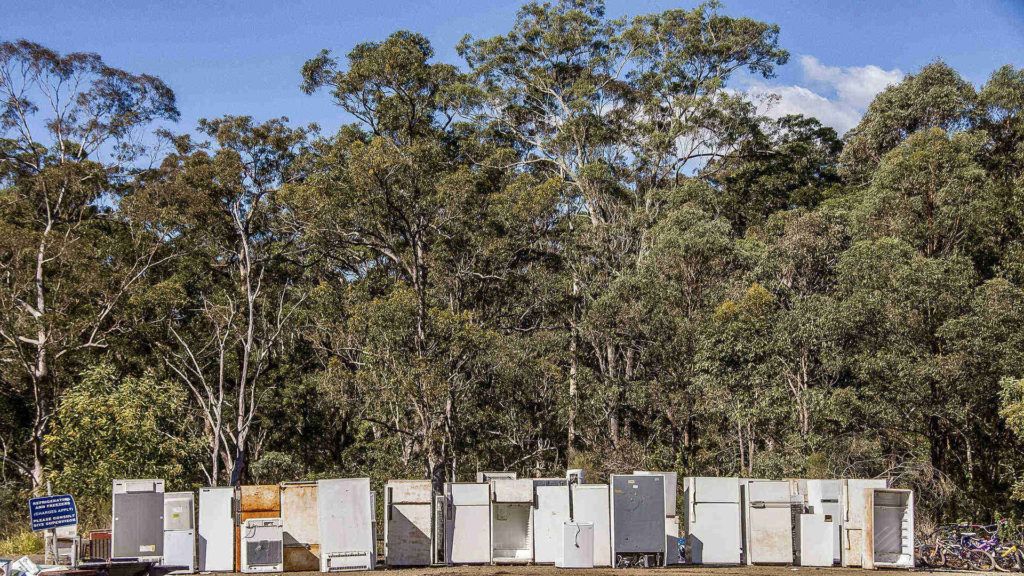Most homeowners commonly overlook refrigerator routine maintenance. They don’t realize there is more to routine maintenance than periodically cleaning the refrigerator’s interior to prevent bad odors. Refrigerator condenser coil cleaning maintains the energy efficiency ratings as well as prolongs the life expectancy of the refrigerator. The condenser coil is located either underneath or behind the refrigerator.
Cleaning your refrigerator condenser coil is a task that is easy to do and usually takes 15-20 minutes. How often the cleaning should occur, depends on dust levels within the home as well as if the home contains pets. Even if the home is clean with no pets, it may come as a surprise as to how much dust collects underneath and behind the refrigerator. Performing this maintenance annually should be sufficient for most homeowners.
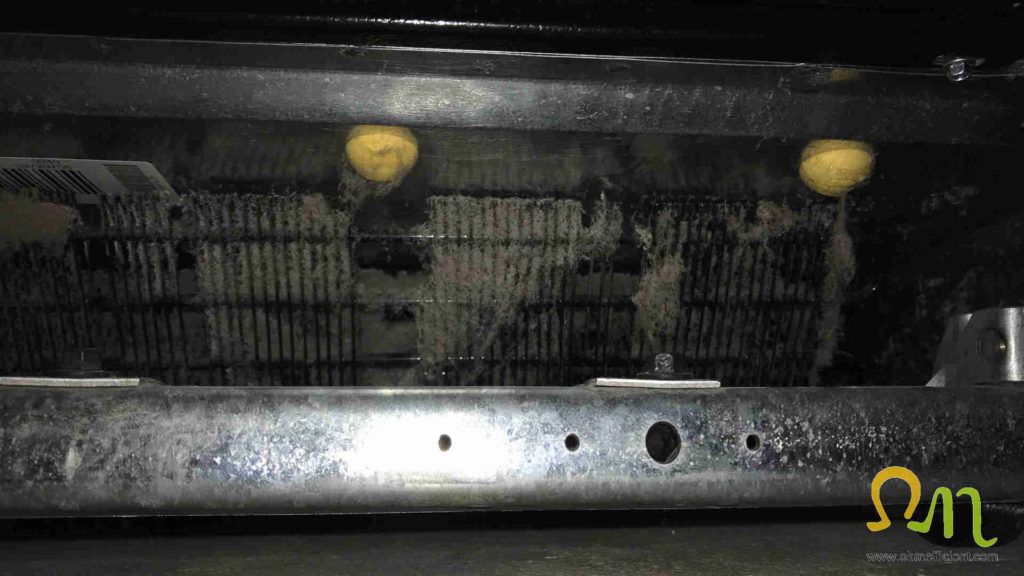

Refrigerator condenser coil cleaning procedure
Start by rolling/sliding the refrigerator away from the wall to allow for proper working access. Use appliance Glide-N-Guard tracks to prevent damaging flooring during this step. While the refrigerator is away from the wall, use this opportunity to vacuum up the dust and grime from the floor and wall areas.


Unplug the refrigerator before cleaning the condenser coil area. This is for your safety and will prevent the refrigerator’s fan from turning on while you are cleaning around it.
If the condenser coils are located behind the refrigerator, simply vacuum up the dust. If the condenser coils are located underneath the refrigerator, remove the toe grill (usually by simply pulling the toe grill toward you; read the owner’s manual for instruction) and vacuum up the dust. Use an appliance maintenance brush to remove dust from the hard to reach coils located behind the first row. Additionally, temporarily remove the cardboard form the lower backside of the refrigerator to vacuum additional dust from this area.


How refrigerators work
Why efficiency decreases with dirty refrigerator condenser coils
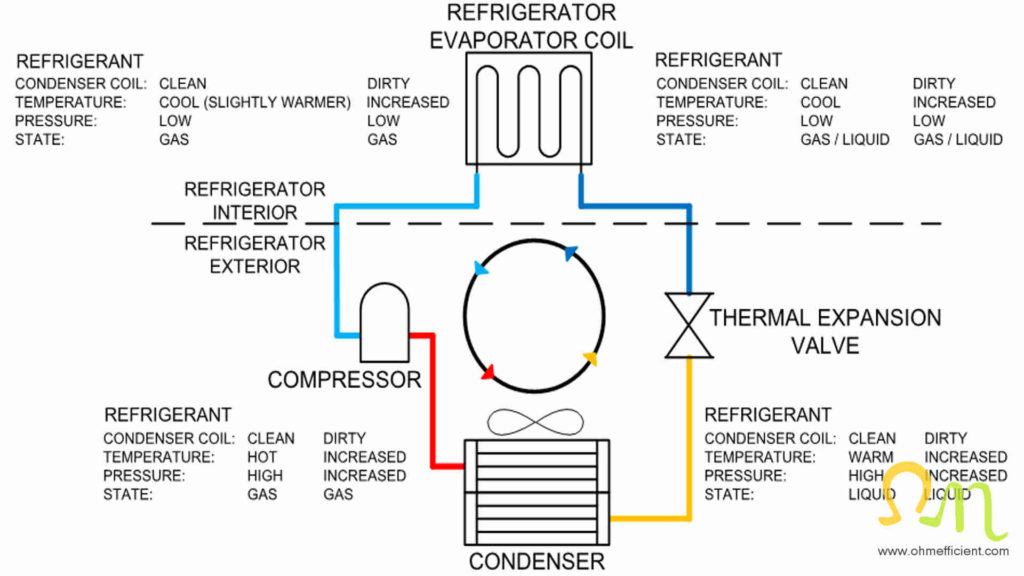
The refrigerant temperature that enters the refrigerator evaporator coil is cool. The pressure is low and the state of the refrigerant is a mixture of both liquid and gas. When warm air from inside the refrigerator comes in contact with the evaporator coil, the remaining liquid of the refrigerant evaporates. The refrigerant changes from a mixed gas / liquid state to a pure gas state. The temperature of the refrigerant is now slightly warmer because heat from inside the refrigerator has been transferred to it. The refrigerant in its gas state, then enters the compressor. This is where the refrigerant compresses from a low pressure to a high pressure gas. This compression generates heat and the refrigerant is now at its highest temperature within the system.
The refrigerant then enters the condenser, which works on the principle that heat transfers from warmer to cooler objects. The current refrigerant temperature is warmer than the kitchens ambient air temperature. The ambient room air cools the refrigerant enough for the refrigerant to condense and change from a gas to a liquid state. The liquid refrigerant then passes through a thermal expansion valve. The thermal expansion valve causes an immediate reduction in refrigerant pressure. This instant pressure drop changes both the refrigerants state and temperature. The refrigerants state changes from a liquid to a mixture of liquid and gas. The refrigerant temperature drops, restarting the cycle within the closed loop system.
Why dirty condenser coils consume more energy
When dust collects on the condenser coil, it acts as a layer of insulation that retains heat within the condenser coil. Large amounts of dust also restrict air movement from the refrigerators fan convection cooling process over the condenser coils. This increases the temperature at which heat transfers from the condenser coil to the kitchen’s ambient air. The refrigerant within the condenser coil will become hot enough to transfer heat from the condenser coil, through the layer of dust into the ambient air. The refrigerant will eventually condense and change states allowing the refrigerator to operate with a dirty condenser coil.
At elevated temperatures the compressor needs to operate at higher pressures to maintain refrigerant volumetric flow throughout the closed loop system. When a compressor operates at higher pressure, it consumes more energy. Energy consumption increases because a higher pressure places a heavier load on the electric motor connected to the compressor. Heavier loads result in a higher current draw from the motor. The compressor will also run for longer a duration to obtain the high pressure requirements, which again consumes more energy. Also, when the compressor operates at higher pressures, it generates more heat in the system. This temperature and pressure increase becomes exponentially worse the longer the system operates with a condenser coil that is dirty.
Refrigerator high pressure controls
If the refrigerator incorporates high pressure controls, the refrigerator will stop working until the pressure drops. This results in a refrigerator that no longer keeps the refrigerator interior cool or freezer frozen. If the refrigerator does not have high pressure controls, it will operate until compressor failure. If compressor failure occurs, the cost of a new refrigerator may be more economical than replacing the compressor and refrigerant.
Lastly, when the condenser coil operates at a higher temperature, the net refrigeration effect decreases. The temperature of the refrigerant within the refrigerator evaporator coil will operate at an increased temperature too, further decreasing efficiency.
Condenser coil cleaning energy savings
A refrigerator with a relatively dirty condenser coil was connected to a power quality analyzer for a period of 24 hours. Total energy measurements were recorded for the 24 hour period. A trend was also captured to show how many times the compressor cycled and for how long it ran each time. The refrigerator condenser coils were then thoroughly cleaned and monitored for another 24 hour period.
Dirty condenser coil 24 hour results
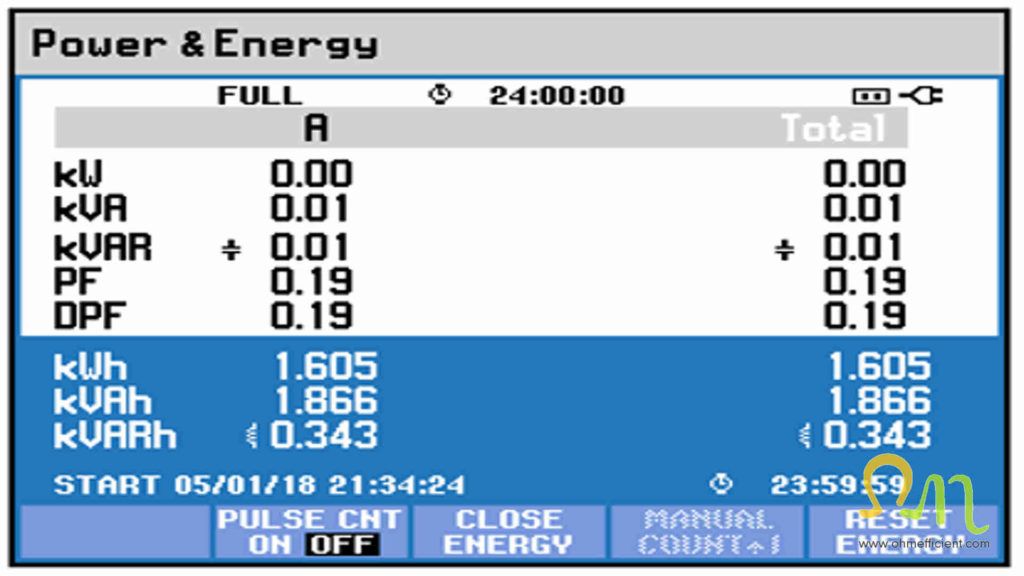
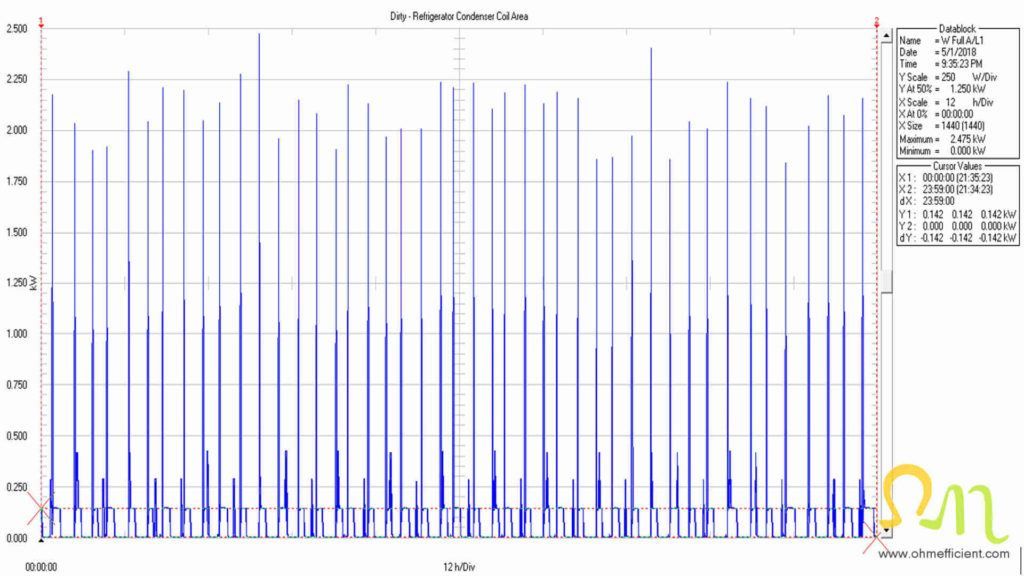
1.605 kWh of real power was consumed in a 24 hour period
0.343 kVARh reactive power was consumed in a 24 hour period
Compressor cycled on/off 45 times
Time between cooling operations 31 minutes 47 seconds
Compressor run-time 13 minutes 35 seconds
Compressor off-time 18 minutes 12 seconds
Power draw per run-time = 148 watts
Clean condenser coil 24 hour results
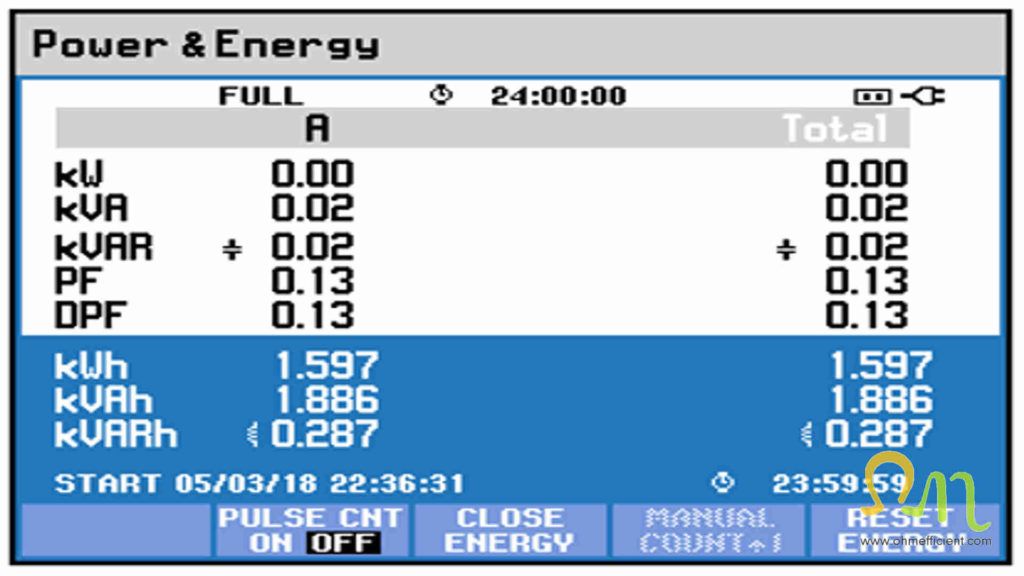

1.597 kWh of real power was consumed in a 24 hour period
0.287 kVARh reactive power was consumed in a 24 hour period
Compressor cycled on/off 49 times
Time between cooling operations 29 minutes 15 seconds
Compressor run-time 12 minutes 57 seconds
Compressor off-time 16 minutes 18 seconds
Power draw per run-time = 142 watts
The end result is that with a clean condenser coil, the refrigerator consumed 0.5% less real power and 17.8% less reactive power. The average amount of time between cooling operations decreased 1 minute and 32 seconds. Additionally, the average compressor run-time decreased 39 seconds per cooling cycle.
Note
Efficiency results will vary depending on the severity of dust levels on the refrigerator condenser coils. If the refrigerator is old and the condenser coil has never been cleaned, greater efficiency results may be achieved.
Conclusion
Dirty refrigerator condenser coils operate at higher temperatures and pressures which reduce net refrigeration effects and efficiency. Operating your refrigerator for prolonged periods of time with a dirty condenser coil will cause premature motor and compressor failure and reduce the life expectancy of the appliance.
Tools required
Appliance Maintenance Cleaning Brush
Vacuum Attachment Kit
High Lumen Flashlight
Screwdriver bit set
Glide-N-Guard Tracks (helps slide out the refrigerator without damaging the floor)
Related content

